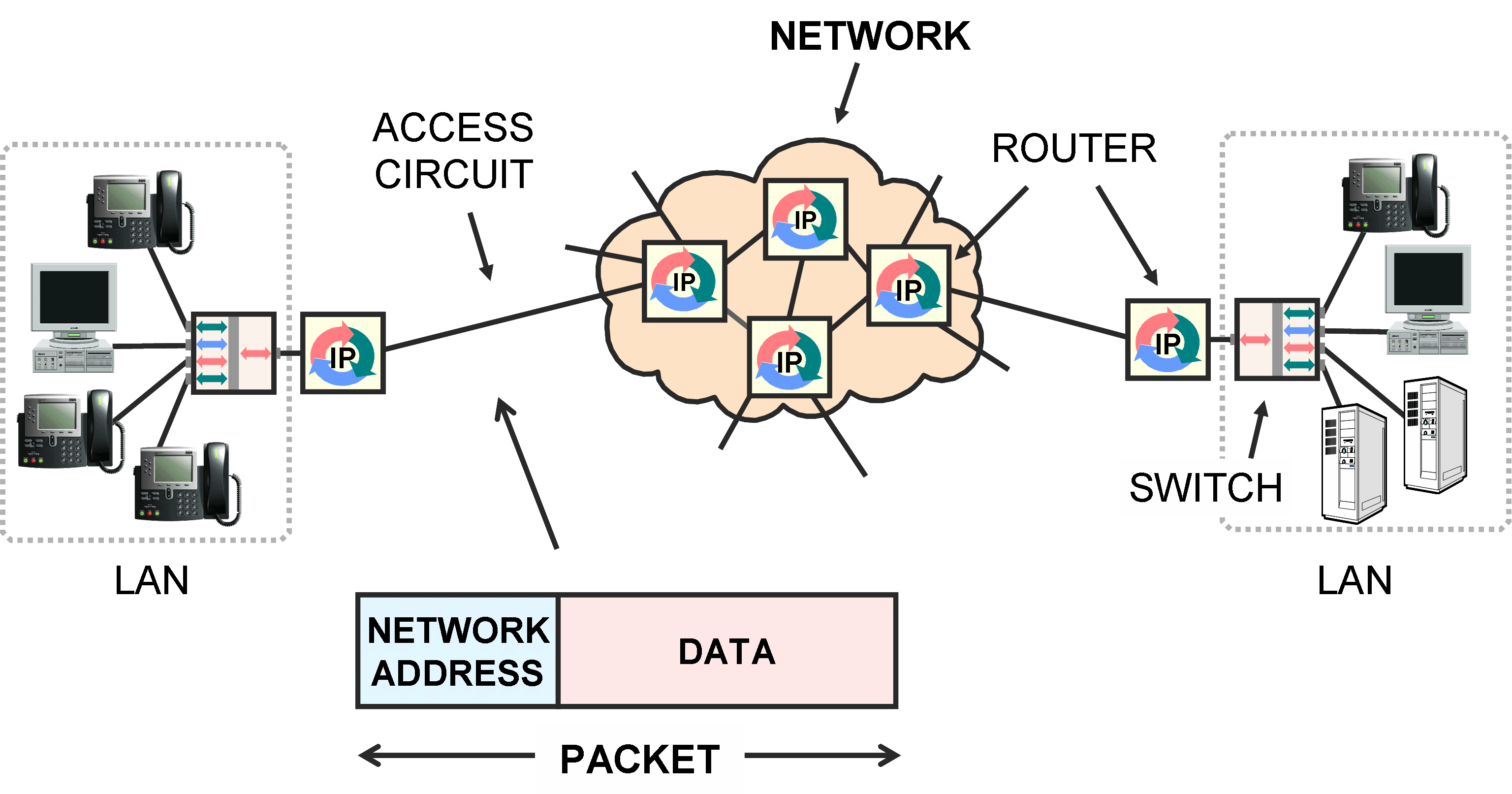Tutorial: Networks and Packets


The word “network” comes from fishing nets, where we have many strings tied together to form a mesh, and one could trace many different possible routes between any two knots or nodes on the net-work.
In the data communications business, we use the word network in the same way. Networks consist of network equipment connected together with high capacity circuits. Normally, there are redundant connections and multiple routes could be followed between any two pieces of network equipment.
Access circuits are connected to each piece of network equipment, and users transmit data over the network by sending it into the network over an access circuit, whence it is transferred between network equipment to the receiving end, then delivered over the far-end access circuit.
Packets are blocks of data with network control information. The most interesting type of network control information is the network address, which indicates the final destination of the packet.
All network equipment, such as routers, look at the network address to decide which route to take to get to that destination.
Data to be transferred over a network must be formatted into packets with network addresses regardless of which type of data circuit is used. The most popular protocols for this is the Internet Protocol (IP).
The definition of a network is having to make a routing decision : which route to take to get to the destination.
If there are no one-of-many route decisions being made, for example, if the data is broadcast to every station, then it is not, strictly speaking, a network